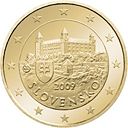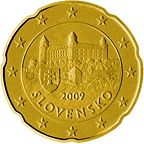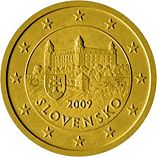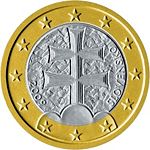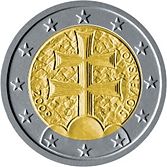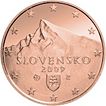
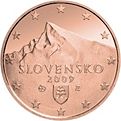
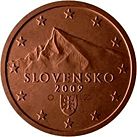
Krivan
The Tatra Krivan Peak is related to major events in Slovak history.
As the
destination for tours undertaken by patriots associated with Ludovit Stur,
it played an important role in the struggle for national awakening. The
Krivan Peak is perceived as a symbol of the High Tatra Mountains, and, in a
broader sense, as a symbol of the diverse natural wealth of Slovakia.
Designers:
Drahomir Zobek, medallist, Kremnica. Mr. Zobek is the author of all recently
circulated Slovak koruna coins.
